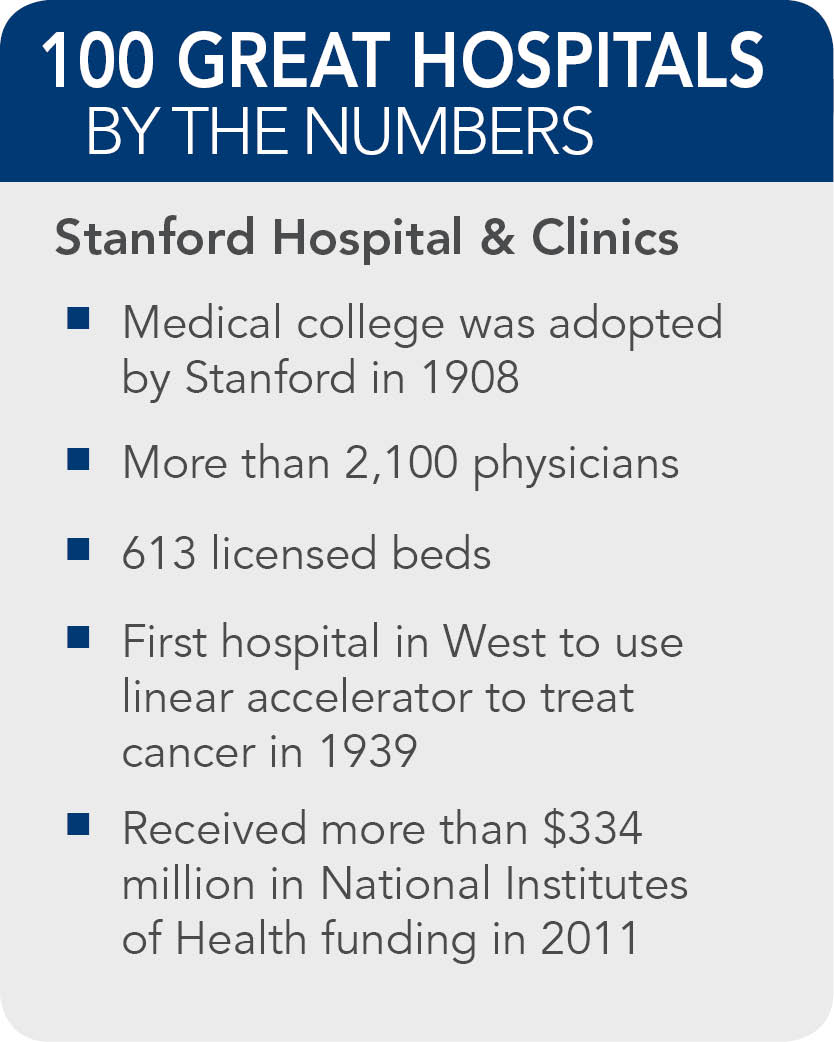Stanford Hospital & Clinics (Palo Alto, Calif.). Leland Stanford, a famous politician and railroad tycoon from the 1800s, founded Stanford University in 1885. After adopting the medical school located in San Francisco, Stanford Medicine came into its own in the early 1900s.
 Today, Stanford Hospital & Clinics — which serves as the teaching hospital of the Stanford School of Medicine and is the cornerstone of Stanford Medicine — stands as one of the most highly acclaimed hospitals in the world with 613 licensed beds. The Magnet-designated hospital is ranked among the top 50 hospitals nationally by U.S. News & World Report for 13 different specialties, the primary ones being otolaryngology, cancer, psychiatry and cardiology.
Today, Stanford Hospital & Clinics — which serves as the teaching hospital of the Stanford School of Medicine and is the cornerstone of Stanford Medicine — stands as one of the most highly acclaimed hospitals in the world with 613 licensed beds. The Magnet-designated hospital is ranked among the top 50 hospitals nationally by U.S. News & World Report for 13 different specialties, the primary ones being otolaryngology, cancer, psychiatry and cardiology.
Stanford has almost 8,000 employees, including more than 2,100 physicians, 700 interns and residents, and 2,100 registered nurses. Home to Nobel Prize winners and some of the country's most esteemed physicians, Stanford also has been the site of many medical breakthroughs and discoveries. These include the first kidney transplant in California in the 1960s, the first successful combined heart/lung transplant in the world in 1981 and the first use of gene expression profiling to predict cancer outcomes in 2002.
Adjacent to Stanford's main hospital is Lucile Packard Children's Hospital, a 311-bed hospital devoted entirely to pediatrics and obstetrics and ranked as one of the top national and international children's hospitals by U.S. News.

 |
 |


